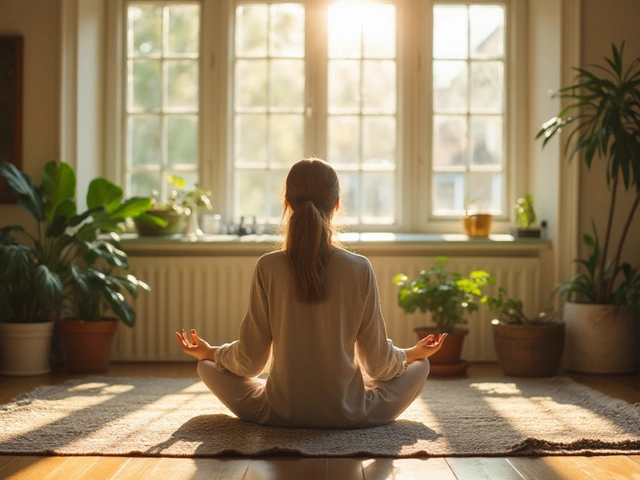Understanding the Importance of Relaxation
It's often easy to overlook the significance of relaxation in our fast-paced world. Yet, the ability to unwind and relieve stress is not just a luxury; it's a necessary component of maintaining mental and physical health. Chronic stress can lead to a myriad of health issues, including anxiety, depression, heart disease, and more. That's where relaxation techniques come into play. By incorporating certain practices into our routine, we can significantly reduce stress levels and improve our overall quality of life.
The mechanisms behind relaxation techniques are fascinating. Whether it's through breathing exercises, mindfulness, or physical movement, these practices engage the body's natural relaxation response. This response is the opposite of the stress response, often referred to as 'fight or flight.' It promotes a state of deep rest that affects various physiological processes—slowing the heart rate, lowering blood pressure, reducing muscle tension, and improving digestion, to name a few.
Mastering the Art of Breathing
Breathing is something we do without much thought, yet it holds the key to unlocking profound levels of relaxation. Diaphragmatic breathing, also known as deep breathing, is especially effective in activating the body's relaxation response. It involves breathing deeply from the diaphragm, allowing the lower belly to rise and fall, which maximizes oxygen intake and stimulates the parasympathetic nervous system, promoting a state of calmness.
Practicing deep breathing can be wonderfully simple. Find a quiet place, sit or lie down comfortably, and place one hand on your chest and the other on your belly. Breathe in slowly through your nose, feeling your belly rise, then breathe out slowly through your mouth or nose, feeling your belly fall. Repeating this process for just a few minutes can have an immediate calming effect, making it a perfect technique for quick stress relief in any situation.
Exploring Mindfulness and Meditation
Mindfulness and meditation have gained popularity in recent years, and for good reason. These practices offer a way to quiet the mind's constant chatter and achieve a state of peaceful awareness. Mindfulness, in particular, encourages us to live in the present moment, observing our thoughts, feelings, and sensations without judgment. This can help break the cycle of stress and anxiety that often comes from ruminating on the past or worrying about the future.
Meditation, which can be considered a formal practice of mindfulness, involves sitting quietly and focusing the mind on a particular object, thought, or activity to train attention and awareness. There are many different forms of meditation, from guided meditations and visualization to mantra-based practices. The key is to find a form that resonates with you and makes it easier to foster a habit of regular practice. Even a few minutes a day can lead to significant improvements in stress levels, mood, and overall well-being.
Incorporating Movement into Relaxation
While stillness can be incredibly soothing, incorporating movement into your relaxation routine can offer its own set of benefits. Practices like yoga and tai chi combine fluid movements with breath control and meditation principles, promoting a harmonious balance between body and mind. Not only do these activities reduce stress, but they also improve flexibility, strength, and cardiovascular health.
Yoga, with its various styles and levels, can be accessible to almost anyone. It encourages mindfulness through the precise execution of poses (asanas) and breath control (pranayama), leading to a state of inner calm. Tai chi, often described as 'meditation in motion,' involves performing a series of slow, graceful movements in a focused and mindful way. Both practices are excellent for those looking to reduce stress and enhance physical health simultaneously.
Creating a Personal Relaxation Ritual
One of the most beautiful aspects of relaxation techniques is their versatility. They can be adapted to fit any lifestyle and can be practiced almost anywhere. Creating a personal relaxation ritual involves selecting practices that you enjoy and that effectively reduce your stress levels. It might be a combination of deep breathing, mindfulness, and movement, or it might involve other activities that promote relaxation, such as reading, taking a bath, or listening to music.
The key to a successful relaxation ritual is consistency. Try to dedicate a specific time each day to your chosen practices. This not only helps in forming a habit but also ensures that you're taking regular breaks to care for your mind and body. Remember, relaxation is not a one-size-fits-all solution. Feel free to experiment with different techniques and activities until you find what works best for you. With time and practice, you'll develop a powerful toolset for combating stress and enhancing your wellbeing.





